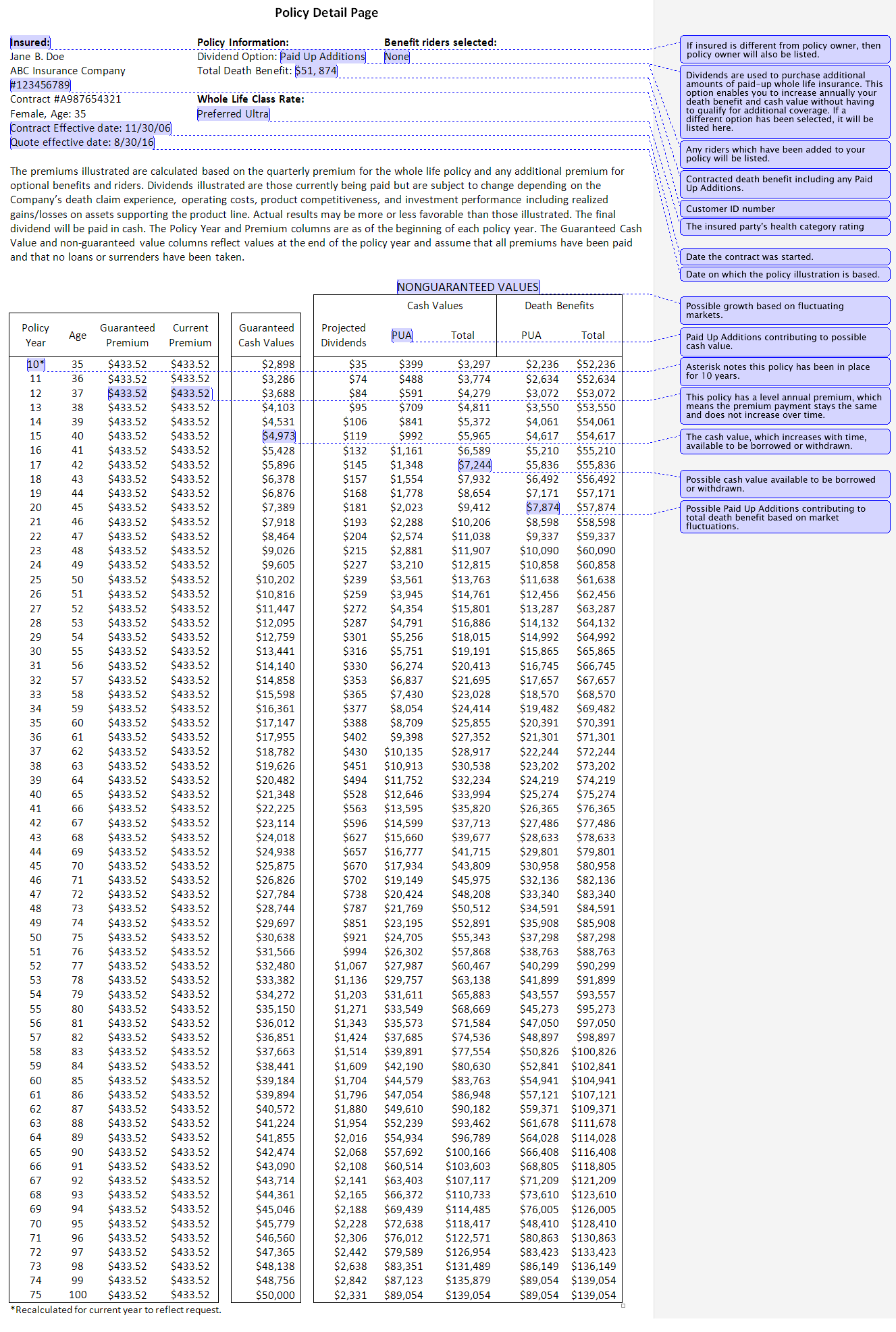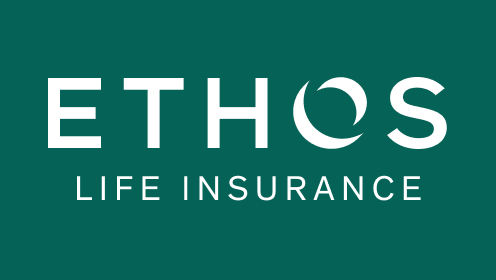A life insurance policy is a contract between an insurance company and an individual. There are a variety of policies, a variety of riders and many choices that have to be made when setting up your coverage.
Regardless of the type of life insurance you buy, reading the policy in full is extremely important and will help you make the best use of your policy.
But, you’re not on your own — this guide will help you understand the ins and outs of reading your life insurance policy.
Life insurance declaration page
The first few pages of a life insurance policy include a high-level summary of your coverage. In most cases, the first page states the name of the insurance company, the type of plan you are purchasing, the name of the insured, the policy owner and the “free-look” period terms.
Life insurance policies have a trial period, often referred to as the free-look period, which gives the policyholder a certain number of days – generally 10 to 30 days – to cancel the policy without penalty and get their first payment back.
After the cover page is the schedule of benefits, also called the declarations page. The following details are usually included:
- Personal information: Review your date of birth, name, and any other information for errors.
- Benefit amount: The amount to be paid upon your death.
- Policy type: Specifies if you have a term or permanent policy.
- Premium amount: How much you have to pay monthly or annually for coverage.
- Policy issue date: The date that you were delivered a policy.
- Policy number: The unique number assigned to your policy. Your beneficiaries will need this number to file a life insurance claim.
- Risk class: This is the life insurance classification you have been assigned which determines how much you pay. For example, Preferred versus Standard, or smoker versus a non-smoker.
- Riders: This is supplemental coverage added to your life insurance policy.
The people impacted by the life insurance policy are also listed on the declarations page. Life insurance policies have a policy owner, the insured and the beneficiaries. It’s important to note the people listed on the declarations page.
- The policy owner: This is the person who set up the policy and is paying the premium. The policy owner is the only one who has access to policy information and can change the beneficiaries listed on the policy.
- The insured: While this person is usually the same as the policy owner, they don’t have to be. When the insured dies, the life insurance company pays out the death benefit.
- The beneficiaries: The people who receive the death benefit when the insured dies.
Beneficiaries are changeable and should be reviewed with every major life event. For example, if the insured gets a divorce and later remarries, they will want to update their beneficiary designation to list their new spouse.
Life insurance declaration page sample
This is a life insurance illustration example for a $50,000 whole-life policy, highlighting specific details that you should review as you read through your policy. Click to enlarge the sample page or you can expand by enlarging your page.
This is an example of a policy illustration for a $50,000 whole life policy, highlighting specific details that you should review as you read through your policy. Click to enlarge the sample page or you can expand by enlarging your page.
Life insurance policy terms and definitions
Life insurance policies are written in legal language that can be confusing, but the policy terms and definitions sections explain what they all mean. Here’s what you can expect to find:
- Death benefit: The death benefit is the amount of money your beneficiaries receive. This section spells out the details of the death benefit and how your beneficiary will make a claim after your death.
- Contestability period: The contestability period is a set amount of time, typically two years from the policy issue date, when the insurer may contest and deny claims.
- Graded-death benefit: If you have a specific type of whole life insurance policy that pays out a limited death benefit in the first few years of the policy, this will be included.
- Exclusions: There are factors that can invalidate or limit a death benefit. Most policies won’t pay a death benefit if the insured dies by suicide within the contestability period. Any intentional misrepresentation of information you provide could result in the policy being voided or could even be considered insurance fraud.
- Premiums: This section details premiums, grace periods and reinstatement. Policies stay in force as long as you pay the premiums. Most policies have a grace period of 31 days, but it can vary. The policy will lapse if payment isn’t received by the end of the grace period. However, reinstatement allows you to restore a lapsed policy.
- Illustrations: Permanent life insurance policies have pages called illustrations that show how the policy will perform at certain interest rates. The illustrations will show how much you spend on policy premiums and how much you’ll earn in cash value.
- Riders: A rider is a supplemental coverage you can add to your policy.
- Accelerated benefits: Accelerated benefits is a clause or rider allowing the insured to receive a portion of benefits before they die if they have a terminal or long-term illness.
- Policy loans: Whole or universal life insurance policies allow the policyholder to take out a loan against the policy. As the cash value in a policy builds, you can borrow against the accumulated funds.
Life insurance policy exclusions
While life insurance policies provide financial protection for your loved ones after you die, there are some exclusions that may apply where the insurer will not pay out to your beneficiaries.
Here are the common life insurance policy exclusions:
- Suicide: Most life insurance policies exclude death by suicide or self-inflicted injuries, as well as deaths resulting from alcohol or drug abuse.
- Fraud: If your insurer finds that you lied about smoking, but then died from a smoking-related illness, the company can refuse to pay out the death benefit.
- Illegal criminal activities: Most insurers will not pay out if you die while doing something illegal. For instance, if you die while robbing a bank or trying to steal a car, your family will not receive any money from the insurance company.
- Hazardous activities: Life insurance policies exclude deaths caused by risky activities such as bungee jumping or skydiving. Your policy will specifically exclude any risky activities you participate in.
- War-time peril: If you travel to war-torn areas, your life insurance policy may not pay out a death benefit. However, there are exceptions if you are a soldier or traveling for work.
Reviewing your policy and fully understanding what is in it ensures that you can make the most of your coverage and there are no hiccups along the way. Additionally, you should periodically update your life insurance policy with every major life event as your needs might change.













